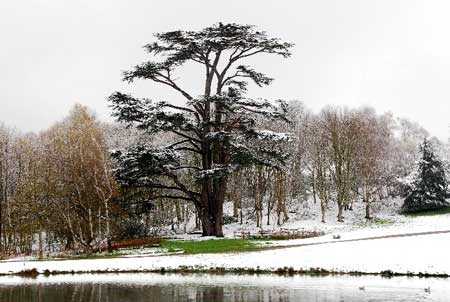With no staff and relatively little money, Janie says she found the knowledge, advice and assistance of the Trust members invaluable.
Work began with an assessment of all potential sources of support, such as the availability of local volunteers, and a study of all the available research material relating to the past and recent history of Painshill.
Janie and her colleagues made an exhaustive exploration of the landscape with a range of survey work. Janie herself walked every inch of the site over and over again.
‘We needed to understand the mind of Charles Hamilton, the topography of the site and every element of his vision and design.
He was an exceptionally strong designer, artist and plantsman, and very early on I realised that it was an enormous privilege to be walking in his footsteps and trying to recreate the genius of the man,' says Janie.

One of the four original cedars of Lebanon
‘Many of the team were graduates in the disciplines we needed at Painshill, with practical skills in archaeology, natural sciences, horticulture and landscape,' says Janie. ‘And there was a historian/archivist to help us piece together the missing evidence of Painshill's development and layout.'
Help with opening up the site and starting the project only became possible through the government-sponsored Manpower Services Commission, which during the 1980s ran excellent work experience schemes for the long-term unemployed.
Janie commissioned a survey of historic trees, so as to ‘read' the history of the estate from the ground up. This was done by a team recruited through the MSC under the supervision of National Trust surveyor Johnny Phibbs. The survey revealed 169 trees surviving from Hamilton's time, including four cedars of Lebanon.
